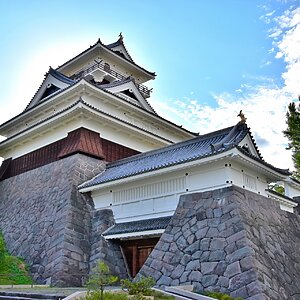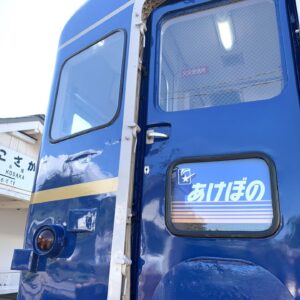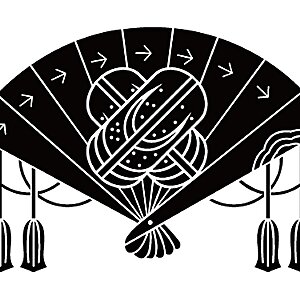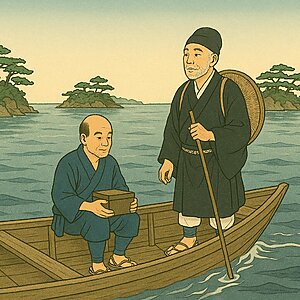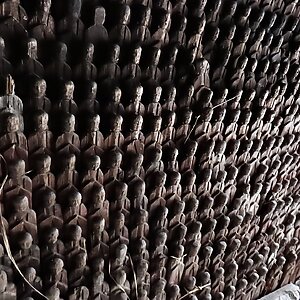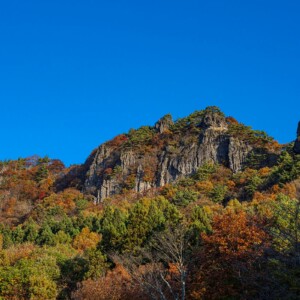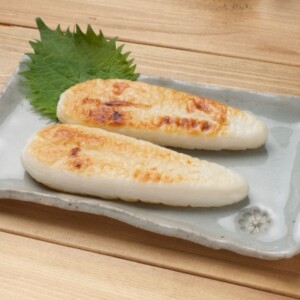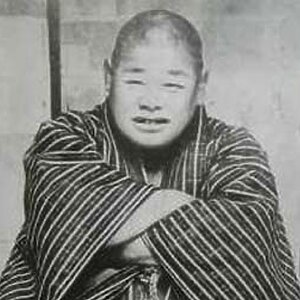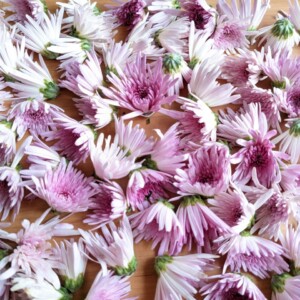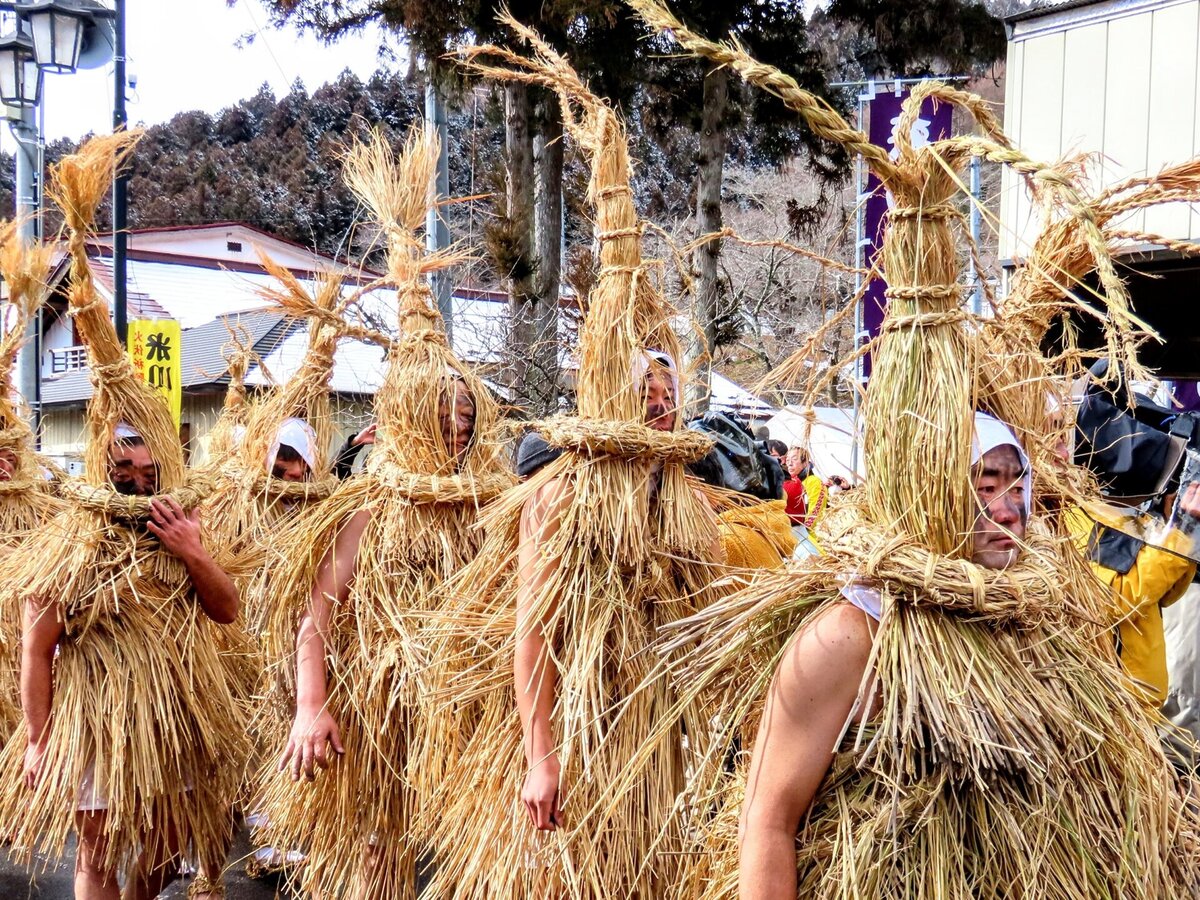
"Yonegawa Water Cows" is a visit event that is passed down on the Miyagi-Iwate Prefecture border | Local report [Tome City, Miyagi Prefecture]
table of contents
The water-cooling event in Yonekawa, Higashiwa-cho, Tome City, Miyagi Prefecture is a " national designated Important Intangible Cultural Property is a visit god event that was decided to be registered as UNESCO Intangible Cultural Heritage on November 29th, 2018 As of January 2025, there have been 22 "UNESCO Intangible Cultural Heritage Registration" in Japan, including 10 "Visiting Gods: Masks and Costume Gods" and in Tohoku, the "Yonegawa Water Cow" Four were registered at the same time.
Tohoku's "UNESCO Intangible Cultural Heritage: Visiting Gods: Masks and Costume Gods"
- Yonekawa water covering (Tome City, Miyagi Prefecture)
- Yoshihama's Sneka (Ofunato City, Iwate Prefecture)
- Oga's Namabald (Oga City, Akita Prefecture)
- Yusa's Little New Year Event Amabald (Yusa Town, Yamagata Prefecture)
In UNESCO Intangible Cultural Heritage, it is registered as "Visiting Gods: Masks and Costume Gods," but what kind of event is this actually happening? This time, I would like to introduce what I have actually visited and experienced and learned about the Yonekawa River, which is held every February on Hatsuho Day.
The ancient fire-dwelling event "Yonegawa water covering"
the Yonegawa watershed , but it is a "firebirth event" that has been going on for over 800 years.
When a person who is in the unlucky year participates, this may also be used as a ward off evil, but there are only a limited number of participants, and only men from the Gokamachi area of Yonekawa, Higashiwacho, Tome City are allowed to participate.
It also means coming-of-age rituals and rites of passage,
The tradition of water-coated inns is to burn off the fire as the main purpose of events. The additional meanings include warding off evil spirits and the coming-of-age ritual and rite of passage to welcome new local groups. Participants who are in the unlucky year will be able to ward off bad luck. One person, who is in his 60th birthday or unlucky years, will lead the group with the Brahma in his arms.
Coming-of-age rituals are one of the rites of passage in which men, who are counted around 15 years old and are old enough to be adults, participate in local festivals, events, and joint work, supporting the community.
Rites of passage are the challenge of welcoming new members of the community as part of a community group through festivals and events.
Quote: Visiting God: Yonekawa's water cover, water cover inn blog
It has been with.
"Yonekawa Water Cover" held in 2025
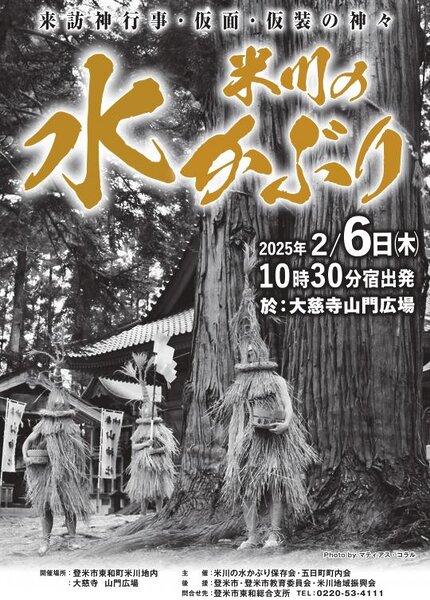
The Yonegawa Water Cows will be held on the first day of February, and in 2025 it was held on Thursday, February 6th. "Hatsunoha no Hatsunoha Day" is the usual date, so there is a difference in the date and day of the week every year, and next year, 2026 will be held on Sunday, February 1st.
Early in the morning of the Hatsunoha, the men in the district water -capped in a nude, wearing a "water-capped dress" made from straw, and painted the faces. I'll prepare.
At around 10:30am, all left the inn with water at once and visited Akihayama Daigongen, the god of fire at Daijiji Temple, and incarnated as the god of fire.
After visiting the shrine, we left the gate of Daijiji Temple and headed to the foot of Suwamori, where Daijiji Temple was located, and after we left the main street of the town, we poured water from the buckets prepared in the district (each household) across the houses. I walked praying for fire.
After that, it is customary to visit Hachiman Shrine and Wakakusa Shrine, then pour water over houses in the back of the town and the Yojuta area and return to the water-filled inn.
It's not just a group of water-coated crews, but a kame and a yondko
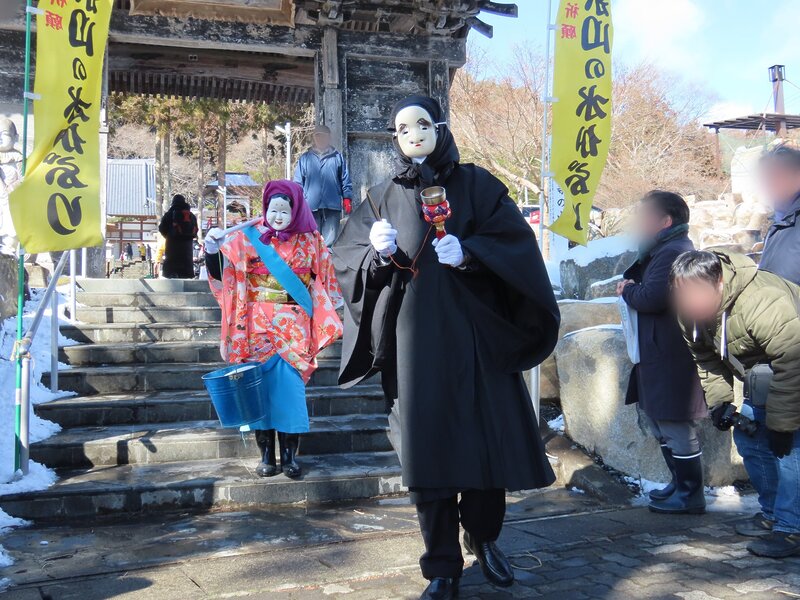
The Yonekawa Water Coat is not just a parade with men dressed in costumes and transformed into the god of fire.
At the same time, apart from the water-coated group, Okame and Hyotko, will travel around the houses in the area and receive a gift. These Okame and Hyottoko are said to be the " god of visiting who brings good fortune ," and Hyottoko is the temporary form of the god of fire, and Okame is the god of his partner.
The Okame carries a hand bucket on a scale stick, and Hyotko rings the hand bell with a monk's robe. By the way, it has become a customary practice not to disclose the true faces and names of Okame and Hyotko.
Even if you make a mistake, be careful not to call someone by someone's name, either by saying "I feel like an acquaintance" or by making a tingly silence. Okame and Hyotko are said to be the visitor gods, so if they call their names they will return to being people.
"Yonegawa Water Cow" begins at 10:30am
The water-coated group will begin their tour at 10:30am. The group has been preparing for the water-cooling parade since the morning, and sets out from Water-cooling inn
The roar of fireworks signaled the departure, and headed across from Daijiji Temple, just outside the water-coated inn.
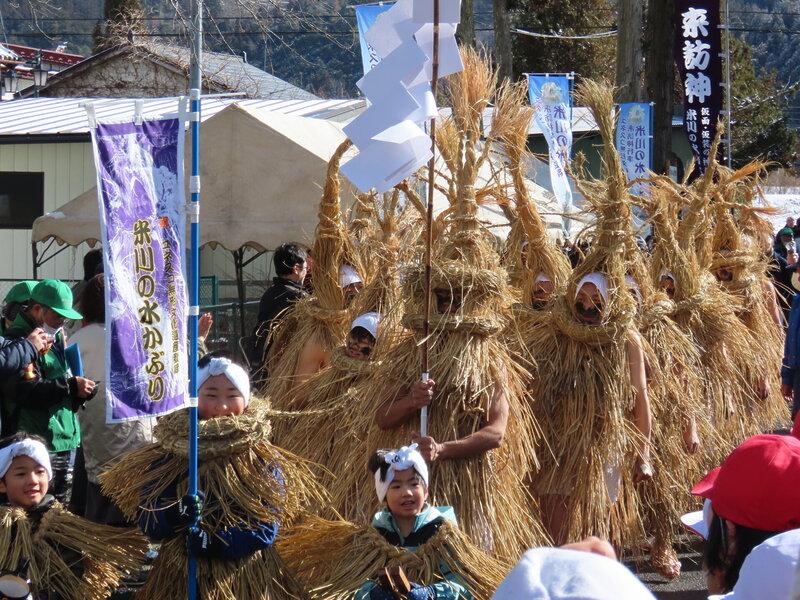
Upon arriving at Daijiji Temple, the water-coated group will be incarnated as the god of fire by visiting and praying at Akiba Daigongen, located within the temple grounds. After that, they head out into town with strange yells. As if I had heard this strange voice, I heard Yoo, ohhhhh
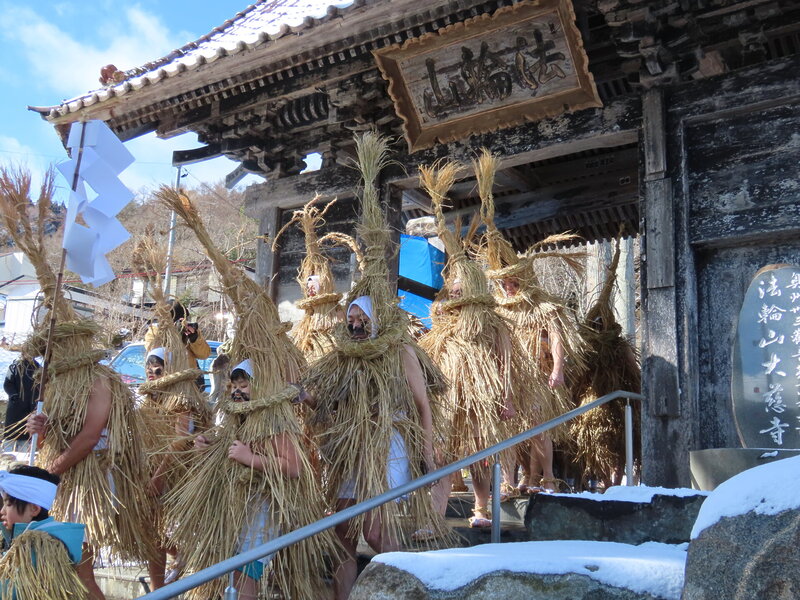
water in a barrel prepared in front of the houses along the road , praying for fire.
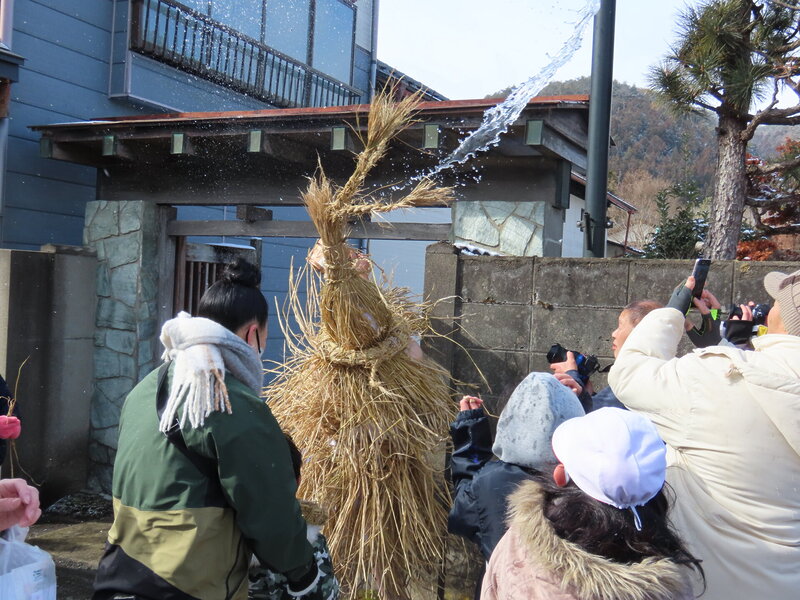
As a group of water-coated people paraded through the town, the group was wearing it, as it is a tradition that they took straw and raised it to the roof of their own house to pray for fire. Remove the straw.
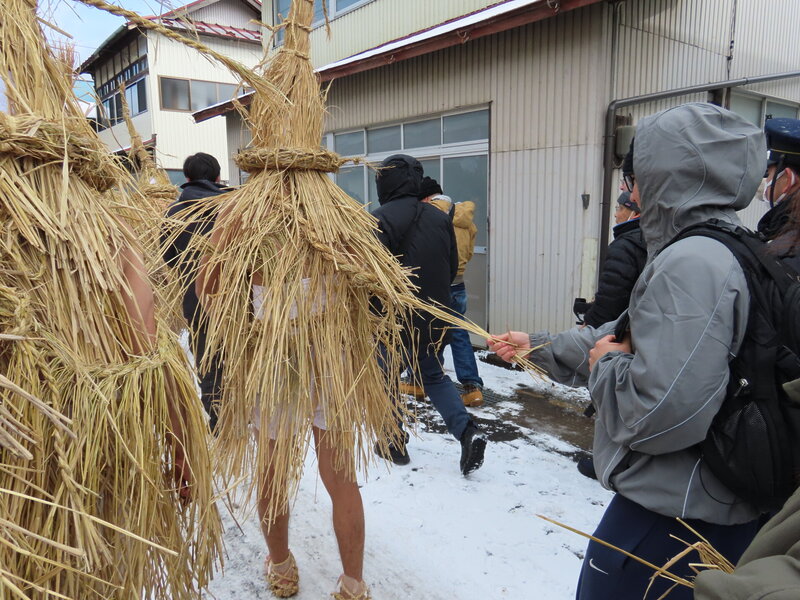
When he finds the buckets, he is shocked by the sight of him pouring water over the houses without any hesitation, and he is surprised by the rapid movements.
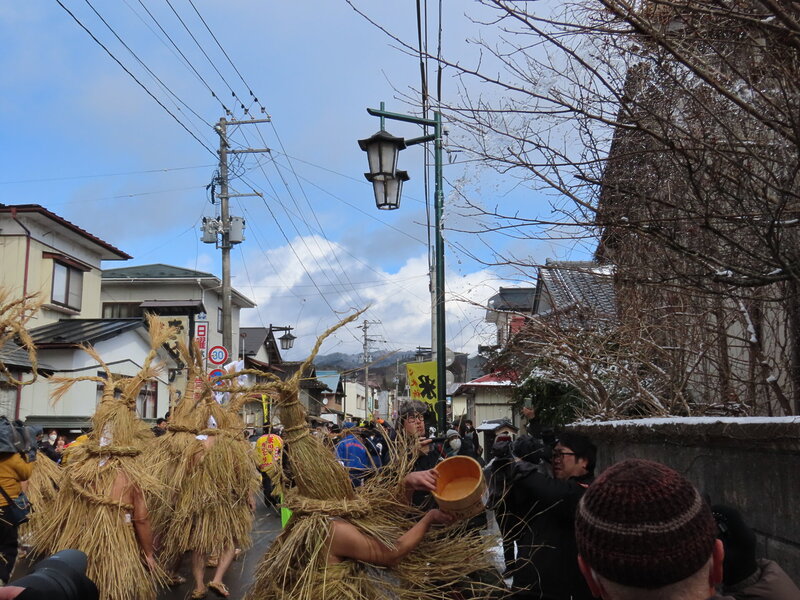
The group heads for Yonekawa Hachiman Shrine, pouring water over the houses along the street.
After visiting Hachiman Shrine, we visit Wakakusa Shrine across the street, then pour water over the houses in the back of the town where we paraded earlier and return to the water-filled inn.
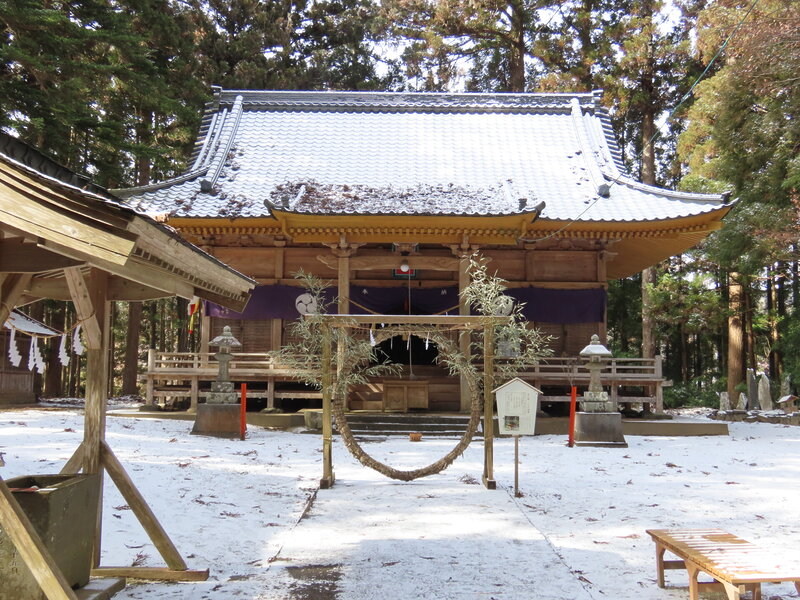
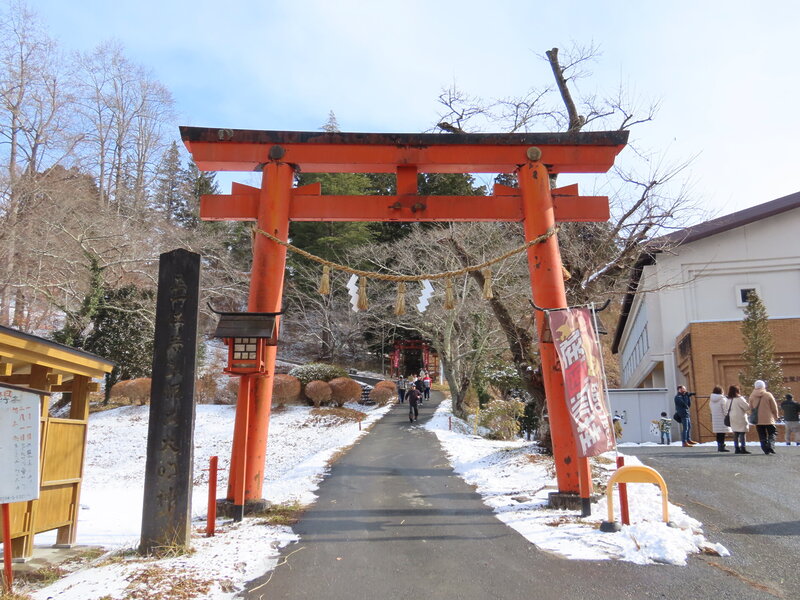
Is it about 3km in length less than the round trip? Yonekawa Water Ceiling Parade " will end in about 1 hour and 30 minutes It is not a festival, but a venerable ritual in which the god of fire is transformed into himself and prays for the town's firestorm.
I think it is truly wonderful that this event has continued until now, not only praying for fireflies, but also plays an important role in coming-of-age and rites of passage for the district.
Although this is an event that only people from the district can attend, it is free to visit, and it is easy to visit if you consider it to be a two-hour event from 10am to 12am. I also think about it.
At present, Towa Town is facing the issue of population decline, and the number of participants in 2025, which previously had more than 30 participants has decreased to 20 people. Ta. The Somin Festival at Kuroishi-ji Temple, a famous festival that represents Tohoku, also ended its 1,000-year history in 2024. Due to a shortage of people who carry on holding events in Yonekawa, there may be some days when it will close its long history. If you're interested, be sure to visit.
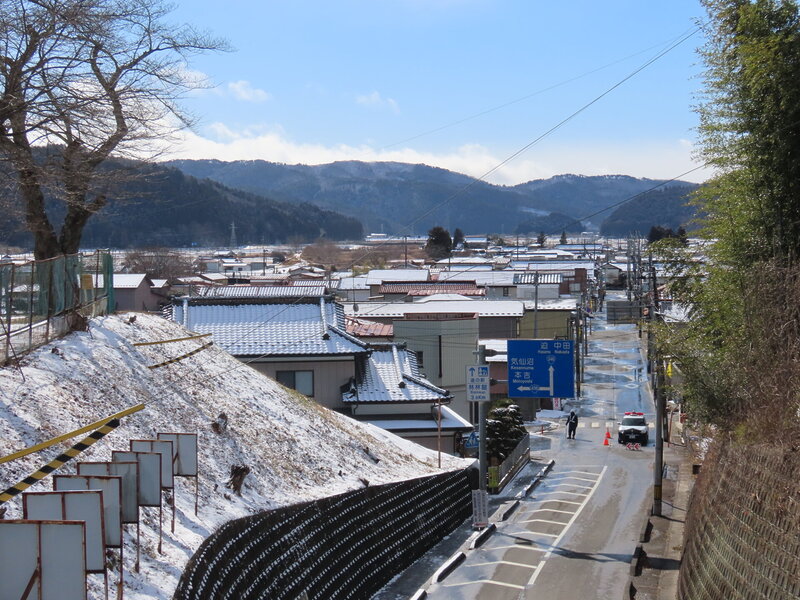
- UNESCO Intangible Cultural Heritage: Yonekawa's watershed
- Venue: Shimo 56 Yonekawa, Tome City, Miyagi Prefecture
- Date and Time: Thursday, February 6th, 2024, 10:30pm Departing from the water-cooled hotel







![I actually visited the Aomori Winter Three Festivals "Hachinohe no Enburi" local report [Hachinohe city, Aomori prefecture] IMG_1442 (1)](https://jp.neft.asia/wp-content/uploads/2025/03/IMG_1442-1-150x150.jpg)
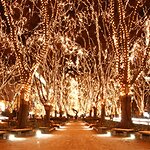
![[Tohoku] Strange festivals in Tohoku! ? Introducing 6 festivals that will surprise people from other prefectures 5055249_m](https://jp.neft.asia/wp-content/uploads/2023/04/5055249_m-150x150.jpg)
![New spots in Iwate Prefecture are packed with great people, baseball, and famous restaurants! I went to three new road stations! Local report [Iwate Prefecture] Iwate Road Station Catch](https://jp.neft.asia/wp-content/uploads/2025/04/9a64af524236eca1ecd5db74710af09c-150x150.jpg)
![Introducing Namekawa Shrine, a power spot where the guardian deity of work and children resides! [Sukagawa City, Fukushima Prefecture] IMG_3476](https://jp.neft.asia/wp-content/uploads/2025/11/IMG_3476-150x150.jpeg)
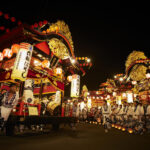
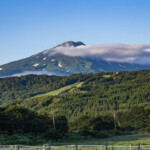
![The battle for bone flesh unfolded in Yokote Basin: "Three Years of Second Year Battle" [Akita Prefecture] 0fb6939d60ada03f05f13ef893cd6663](https://jp.neft.asia/wp-content/uploads/2023/07/0fb6939d60ada03f05f13ef893cd6663-150x150.jpg)
